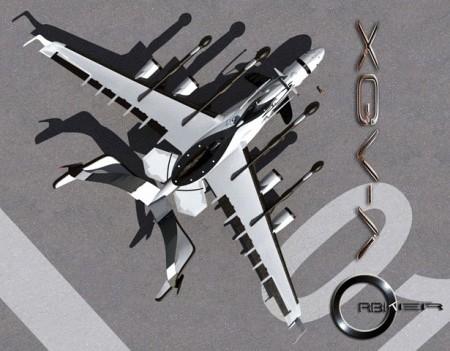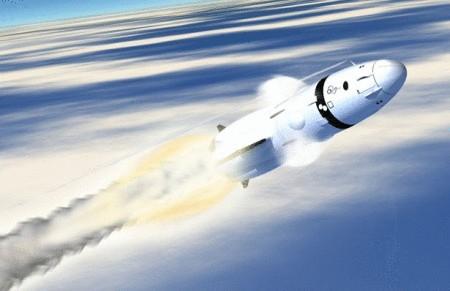276
The Future of Lunar Tourism
Many people love to look at the moon and do it from anywhere: from the couch at home, from the mountain on a hike, from an astronomical observatory and from any other suitable places. But soon we will have the opportunity to literally walk on the moon. Of course, at first it will be available only obscenely rich people, because a ticket to travel on the moon will cost about 150 to 200 million US dollars, but after a while, when such a trip becomes commonplace, the price will undoubtedly decrease and become adequate for most ordinary mortals.


The project, designed by Barcelona-based industrial designer Oscar Vinals, consists of three elements: the Moon Window orbiting space station, the Orbiter rocket with a manned capsule and the XLDron unmanned aerial vehicle.
The carrier rocket is a giant unmanned aerial complex designed to deliver missiles and aircraft to the upper atmosphere, where they will be launched. The length of the two giant wings of the XLDron Global Versatile is 80 meters, and the area of horizontal plumage is 740 m2.
The XGV is equipped with five super-powerful turbofan engines of the new generation, running on a mixture of biofuel and conventional aviation fuel. These five engines develop thrust up to 330 kilonewtons. The central turbo engine, working at maximum power, should be responsible for the take-off of the device and the rise to altitude.


The XLDron Global Versatile can lift an aircraft weighing up to 150 tons to an altitude of about 12.8 km. It is also possible to adjust the height of the chassis depending on the load level, and a mechanical lifting system built into the wings, designed to provide the highest lift factor in any situation.
The Moon Window space station will be a permanent space station located at a fixed point in the orbit of the Moon with the ability to receive up to 7 passengers for short periods of time (1 to 2 weeks) or three passengers for a longer period of time.

The Moon Window space station serves as a platform or base for launching manned research capsules to the lunar surface and lunar observatory. It consists of 1 Nomadic capsule carrying the crew, 1 Zeus rocket-powered capsule, 2 Conqueror research capsules (one as a rescue capsule) and one Peregrine technical support satellite.
There are two main modules: Energy, which will store fuel for Moon Window and Zeus, and the Zeus rocket engine, which will provide research and contain storage for scientific materials, as well as two exits to an external station.
At its first launch, the Moon Window space station will travel from Earth to a fixed point in the orbit of the moon in its entirety (all capsules, rocker and modules), but in subsequent space travel, only the Zeus and Nomadic capsules will travel from Earth to the moon and back.

While there are many questions about the implementation of this project, but still we hope that this idea will be successfully implemented in the near future and the modern younger generation will consider walking on the moon something quite ordinary.

Source: /users/104


The project, designed by Barcelona-based industrial designer Oscar Vinals, consists of three elements: the Moon Window orbiting space station, the Orbiter rocket with a manned capsule and the XLDron unmanned aerial vehicle.
The carrier rocket is a giant unmanned aerial complex designed to deliver missiles and aircraft to the upper atmosphere, where they will be launched. The length of the two giant wings of the XLDron Global Versatile is 80 meters, and the area of horizontal plumage is 740 m2.
The XGV is equipped with five super-powerful turbofan engines of the new generation, running on a mixture of biofuel and conventional aviation fuel. These five engines develop thrust up to 330 kilonewtons. The central turbo engine, working at maximum power, should be responsible for the take-off of the device and the rise to altitude.


The XLDron Global Versatile can lift an aircraft weighing up to 150 tons to an altitude of about 12.8 km. It is also possible to adjust the height of the chassis depending on the load level, and a mechanical lifting system built into the wings, designed to provide the highest lift factor in any situation.
The Moon Window space station will be a permanent space station located at a fixed point in the orbit of the Moon with the ability to receive up to 7 passengers for short periods of time (1 to 2 weeks) or three passengers for a longer period of time.

The Moon Window space station serves as a platform or base for launching manned research capsules to the lunar surface and lunar observatory. It consists of 1 Nomadic capsule carrying the crew, 1 Zeus rocket-powered capsule, 2 Conqueror research capsules (one as a rescue capsule) and one Peregrine technical support satellite.
There are two main modules: Energy, which will store fuel for Moon Window and Zeus, and the Zeus rocket engine, which will provide research and contain storage for scientific materials, as well as two exits to an external station.
At its first launch, the Moon Window space station will travel from Earth to a fixed point in the orbit of the moon in its entirety (all capsules, rocker and modules), but in subsequent space travel, only the Zeus and Nomadic capsules will travel from Earth to the moon and back.

While there are many questions about the implementation of this project, but still we hope that this idea will be successfully implemented in the near future and the modern younger generation will consider walking on the moon something quite ordinary.

Source: /users/104






















